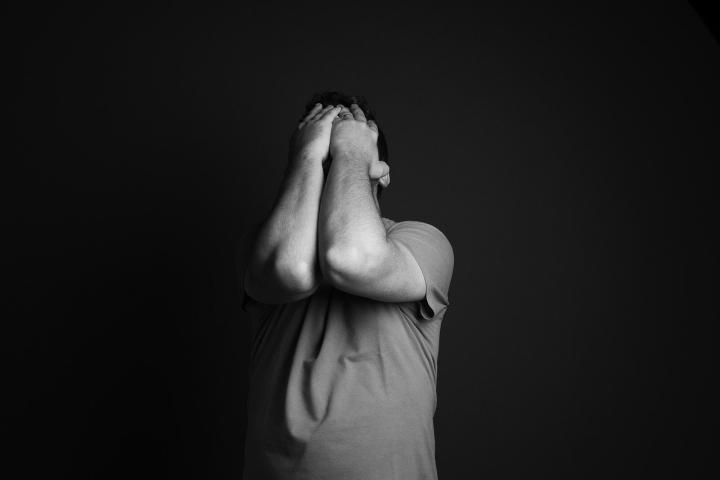Why You Might Dread The Return to Campus
MindLetter post written by Dr Kitty Wheater.
Dear all,
The Friday lunchtime drop-in continues today, 1.10-1.50pm in the Chaplaincy. We will then pause for two weeks for the spring vacation, and return for the online session on Tuesday 26th April.
This week, something that's been on many of your minds...

Why You Might Dread The Return to Campus
In recent weeks, we have found ourselves caught in the crosshairs of a fundamental conundrum. We are teaching, learning, and working in person more than at any point in the last couple of years – and there is still a vast amount of Covid in circulation. What’s more, with lateral flows neither to be had for love nor (now) money, we may find ourselves able neither to test nor to rely on others to do so. A steady trickle of emails have landed in my inbox: ‘we are dreading the return to campus,’ they say. And when you dig down into the dread and anxiety around on-campus working and studying, a host of things reveal themselves.
There is fear of Covid itself, which is the fear of not being able to protect ourselves and vulnerable loved ones from illness. Intrinsic to the fear, there is uncertainty about how to understand the new level of risk. In the societal and institutional governance of that risk there is, we trust, a balancing act occurring. On the one hand, there are decreases in risk – vaccines, immunity through prior infection, mask-wearing and hand sanitiser in buildings. And on the other, there are increases: more commutes on trains or buses, more days in the office or the lecture hall, more trips to the supermarket for a sandwich.
The words ‘we trust’ are key. After two years of isolation, illness, grief, anger, and distance, trust may be in short supply. Many of us have tasted, in ways we never expected, the banality of disaster: how one act, encounter, or quirk of bureaucracy can have life-altering effects. This means that, for many, the return to campus is triggering a threat response. The idea of it brings us into states of fight, flight, and freeze: we may feel angry, irritable, frightened, or simply numb with dread.
Then there is the fact that while we were all working and studying from home, life moved on. We found a new way of existing, and now we are being asked to change it. Some things became easier, and kinder. Commutes were shelved. Lunch became a hot omelette rather than a cold sandwich. Other things were not particularly easier or kinder, but they were just life, living itself: homes and partners and nurseries and jobs, chosen within the new order of time, space, and place. Two years of home or hybrid working is a long time, and our lives shifted and changed and bubbled around their new river course.
And then there's what home working protected, and made possible; how if there was a day, week, or month we couldn’t bear to get out of bed, but we could still string together words and plans, no matter how hollow they felt, there's the fact that we could stay in our pyjamas and no-one was any the wiser. Indeed, I know from some of you that because of what life has handed you these last two years, the only way you could keep going was that you didn’t have to come onto campus, and sit in a room with other human beings, and pretend you weren’t facing the fight of your life.
When life has settled into its own new version of itself, the imposition of the old model is not a return. It’s simply a turn. It can be just as new and disruptive and frightening and perplexing as it was, two years ago, to download a new application called Microsoft Teams.
How might we look after ourselves, in the midst of this?
GRAIN: Ground, Recognise, Allow, Investigate, Nurture
Tara Brach’s RAIN practice is a hugely helpful framework for approaching and honouring strong feelings, giving them sufficient space and friendly attention that we can respond wisely. For steadiness, I pair this with grounding, to create what my Oxford Mindfulness Centre colleague Chris Cullen calls ‘GRAIN’.
Ground
When feelings of dread, anger, or anxiety arise, begin by giving some attention to the sensations where the body is in contact with what is supporting it: the touch and pressure at the soles of the feet, the contact of the backs of the upper legs and sitbones with the chair.
If emotion is overwhelming, you might actually sit on the floor, with a cushion between your back and the wall; keep the eyes open, look around the room, and really sense the body present and safe in its space.
Recognise
Take a moment to notice and name the feelings that are coming up: ‘here is anxiety’, ‘here is anger’, ‘here is dread’. Take a piece of paper, and scribble down, in quotation marks, what the voice of thoughts is saying internally: ‘why don’t they listen,’ ‘I’m not going to be able to cope,’ ‘it’s not fair’.
The experience of strong emotion often hits us as an all-encompassing ‘blob’ of awfulness, which rapidly spirals round upon itself. Pausing and naming its separate components, ‘parsing’ it like you might a sentence for grammar, can help offer space and clarity.
Allow
We typically have two reactions to strong feeling: we avoid it, through denial, distraction, and procrastination; or we fixate upon it – ruminating and spiralling through different strata of thought, feeling and action.
See what it’s like to allow the thoughts and feelings to be as they are. You might even say to yourself, internally, ‘it’s ok to feel like this. It’s understandable that I would feel like this’. In so doing, you are not necessarily saying that the situation is ok; rather, you are giving the emotions space to be as they are, without the added complexity of denial or fixation.
Investigate
Our automatic threat response typically takes us into thinking ‘about’ the feelings, rather than really feeling them. Because emotion lives in the body, its processing and integration into wise action can’t complete without gentle embodied attention.
See if you can notice, with some friendliness, where the body is holding its anxiety, anger, or discontent: it could be tightness in the chest or stomach, restlessness in the limbs, or a fixed or rigid quality in the upper body. Here you might repeat, internally, ‘it’s ok to feel this; it’s understandable that I would feel this.’
Nurture
Sense back into the body’s places of support, presence, and contact, through feet and sitbones, sensing how the body can hold and contain all that you have noticed. Drop a gentle question into awareness: ‘what does this need?’
Sometimes what comes up is remarkably simple. We need a cup of tea, or to shut down our emails for ten minutes and walk around the block. We may need to return to grounding, with a short practice like this FOFBOC, or something longer, like this Mindfulness of Body and Breath for Sleep practice.
Often, when core experience is gently acknowledged and honoured in this way, the heart of the matter comes through; we see that there is something we need to say, or an action we need to take.
GRAIN is a process that might take a few minutes, sitting quietly; or you might explore it at more length, with Tara Brach’s 20 minute RAIN practice. On difficult days, you may find it helpful to repeat it at regular intervals, with pen and paper to note what you find. By grounding, checking in, acknowledging and nurturing what’s present, we enable ourselves to see clearly what it is that troubles us, and what it is that may best help.
As we return to campus, life will shift and eddy and move. We will work our way through and around what comes. In the midst of their protective armouring, our nervous systems are wonderfully adaptive and creative. They will take in new information, and alert us to what may need to be different; they will also find places of safety and ease. Keep listening, keep grounding, stay curious, and take care of yourselves as this new turn unfolds.
Warm wishes
Kitty


